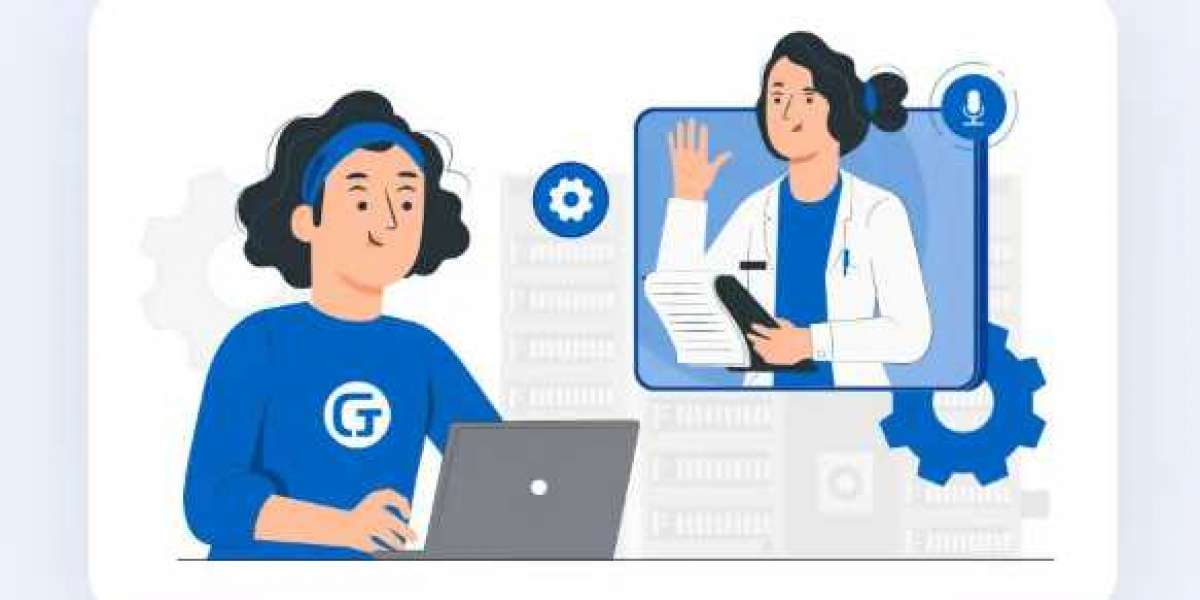Telemedicine is transforming the healthcare landscape, revolutionizing the way patients access medical care and how healthcare providers deliver services. One of the most prominent developments in this field is the rise of doctor-on-demand apps, which allow patients to connect with healthcare professionals remotely for consultations, prescriptions, and other services. This shift in how we access healthcare is reshaping the industry in significant ways, making healthcare more accessible, efficient, and cost-effective. In this article, we will explore the future of telemedicine and how doctor-on-demand apps are driving this transformation.
The Rise of Telemedicine
Telemedicine is not a new concept, but it has gained considerable momentum in recent years, especially following the COVID-19 pandemic. The need for remote healthcare became more urgent as social distancing measures and lockdowns forced people to stay at home. Hospitals and clinics were overwhelmed, and traditional in-person visits became less feasible. As a result, telemedicine became a vital solution, offering patients the ability to receive consultations and care from the comfort of their homes.
However, the growth of telemedicine is not just a response to the pandemic. Advancements in technology, the widespread adoption of smartphones, and the increasing demand for more convenient healthcare services have all played a role in making telemedicine more mainstream. Today, doctor-on-demand apps are an integral part of the telemedicine ecosystem, providing patients with a wide range of services, from general consultations to specialized care.
What Is a Doctor on Demand App?
A doctor-on-demand app is a mobile application that allows patients to consult with doctors remotely through video calls, chat, or phone calls. These apps are designed to offer quick access to medical advice, prescription refills, and follow-up care. They are typically available 24/7, making it easy for patients to get medical attention whenever they need it, regardless of their location.
Doctor-on-demand apps can connect patients with a variety of healthcare professionals, including general practitioners, specialists, mental health counselors, and even pharmacists. The apps are equipped with features like secure video conferencing, appointment scheduling, medical records management, and payment processing, creating a seamless experience for both patients and providers.
Key Benefits of Doctor on Demand Apps
1. Convenience and Accessibility
One of the primary benefits of doctor-on-demand apps is convenience. Patients no longer need to travel to a doctor's office, wait in long lines, or take time off work to see a healthcare provider. With a doctor-on-demand app, they can consult with a doctor from their home, office, or even while traveling. This level of accessibility makes healthcare more inclusive, as it can reach individuals in rural areas, underserved communities, or those with mobility challenges.
2. Reduced Waiting Times
In traditional healthcare settings, patients often face long waiting times to see a doctor. This can be frustrating and even harmful, especially for individuals with chronic conditions or urgent medical needs. Doctor-on-demand apps help eliminate this issue by providing quicker access to healthcare providers. Many apps allow patients to see a doctor within minutes, significantly reducing waiting times and making healthcare more efficient.
3. Cost Savings
Telemedicine, including doctor-on-demand apps, can also be more cost-effective for both patients and healthcare providers. For patients, remote consultations are often more affordable than in-person visits. They may also save money on transportation and time off work. Healthcare providers benefit from reduced overhead costs, as they do not need to maintain physical office space or deal with as many in-person appointments. This cost efficiency makes telemedicine a viable option for individuals without comprehensive health insurance.
4. Continuity of Care
Doctor-on-demand apps help ensure continuity of care by allowing patients to maintain regular communication with healthcare providers. Follow-up appointments, prescription refills, and management of chronic conditions can all be done remotely, reducing the need for in-person visits. This is especially valuable for patients who need regular check-ins or have busy schedules that make traditional appointments difficult.
5. Wide Range of Services
Doctor-on-demand apps offer a wide range of services beyond general consultations. Patients can use these apps to receive mental health counseling, get second opinions, manage chronic diseases, and even receive prescriptions for common conditions like colds, allergies, or skin problems. Some apps also offer services like lab test results reviews, wellness checkups, and lifestyle management, all of which can be accessed remotely.
How Doctor on Demand Apps Are Shaping Healthcare
1. Improved Healthcare Access for Underserved Populations
One of the most significant ways that doctor-on-demand apps are shaping healthcare is by improving access to care for underserved populations. In rural and remote areas, access to healthcare professionals can be limited, forcing people to travel long distances to receive care. Doctor-on-demand apps bridge this gap by allowing patients to consult with doctors via video calls or chat, eliminating the need for travel.
Telemedicine is also a game-changer for individuals who face financial or logistical barriers to traditional healthcare. Those with limited access to health insurance or transportation can use doctor-on-demand apps to receive affordable care, improving overall health outcomes and reducing disparities in healthcare access.
2. Faster Diagnosis and Treatment
The speed at which doctor-on-demand apps provide consultations can lead to faster diagnoses and treatment. Traditional doctor visits may involve multiple steps, including waiting for an appointment, traveling to the clinic, and then waiting to see the doctor. This delay can be especially concerning for patients with time-sensitive conditions.
With doctor-on-demand apps, patients can connect with a healthcare professional in real-time, often within minutes, and begin discussing their symptoms or concerns. This rapid access to medical advice can lead to quicker diagnoses, earlier treatment, and a reduction in healthcare complications.
3. Mental Health and Wellness Support
Mental health services have been a major focus of telemedicine, especially in recent years. Doctor-on-demand apps are making it easier for individuals to access mental health professionals for counseling, therapy, and psychiatric care. This is crucial, given the increasing mental health crisis globally, with many people struggling to find accessible and affordable mental health care.
Doctor-on-demand apps also allow for ongoing mental health support, enabling individuals to maintain regular appointments with their therapists or counselors without needing to visit a physical office. These apps often provide a range of services, including therapy sessions for anxiety, depression, stress management, and even substance abuse counseling.
4. Healthcare Provider Efficiency
From a healthcare provider's perspective, doctor-on-demand apps are transforming how healthcare professionals manage their practice. With telemedicine, doctors can extend their reach, seeing more patients in less time, and providing consultations to people who would otherwise not have access to care.
These apps also help providers streamline administrative tasks, such as scheduling, billing, and managing patient records, which can be cumbersome in traditional settings. Automation of these tasks can allow doctors to focus more on providing care, rather than dealing with the logistical side of running a practice.
5. Integration with Wearable Devices and Health Monitoring Tools
The future of doctor-on-demand apps will likely involve greater integration with wearable devices and health monitoring tools. Patients are increasingly using devices like fitness trackers, smartwatches, and medical-grade wearables to track vital signs such as heart rate, blood pressure, and glucose levels. Doctor-on-demand apps can integrate this data into consultations, allowing healthcare providers to offer more personalized, data-driven care.
These integrations can help healthcare professionals monitor patients' conditions in real-time, enabling them to make better-informed decisions about treatment plans. For example, a patient with diabetes can use a wearable glucose monitor, and the data can be shared with their doctor during a remote consultation, helping to adjust medications or suggest lifestyle changes.
The Future of Doctor on Demand App Development
As the demand for telemedicine continues to rise, the development of doctor-on-demand apps will evolve. The future of doctor on demand app development will likely include several key trends and innovations.
1. Artificial Intelligence and Machine Learning Integration
Artificial intelligence (AI) and machine learning (ML) are expected to play an increasingly important role in doctor-on-demand apps. AI can be used to triage patient symptoms, recommend potential diagnoses, and even assist healthcare providers with treatment plans. Machine learning can also help analyze patient data, identify patterns, and predict health trends, leading to more personalized care.
2. Enhanced Security and Privacy Measures
As telemedicine becomes more widespread, ensuring patient privacy and security will be paramount. Doctor-on-demand apps will need to comply with strict regulations like HIPAA (Health Insurance Portability and Accountability Act) in the United States and similar privacy laws in other regions. This will require continuous improvements in encryption, data storage, and security measures to protect sensitive patient information.
3. Increased Focus on Specialization
While general consultations are still the most common use of doctor-on-demand apps, there is a growing trend toward specialized telemedicine services. Patients can already consult with specialists in fields like dermatology, psychiatry, and even cardiology through doctor-on-demand apps. In the future, we can expect to see more specialized services offered, allowing patients to receive highly targeted care remotely.
4. Global Expansion and Cross-Border Consultations
As telemedicine continues to grow, doctor-on-demand apps will become more globally accessible. Patients may be able to consult with doctors from different countries, overcoming geographical barriers to specialized care. This international approach could also facilitate second opinions and enable patients to access treatments that are not available in their own countries.
Conclusion
Doctor-on-demand apps are at the forefront of the telemedicine revolution, offering patients a convenient, cost-effective, and accessible way to receive healthcare. With the continued development of these apps, the future of healthcare is becoming more patient-centered, efficient, and inclusive. As technology advances and the demand for remote care grows, doctor-on-demand apps will continue to shape the way we experience healthcare, making it more accessible and personalized than ever before. If you are considering developing a doctor on demand app, it is essential to stay informed about the latest trends and technologies to ensure that your app meets the needs of both patients and healthcare providers in this rapidly changing landscape.






